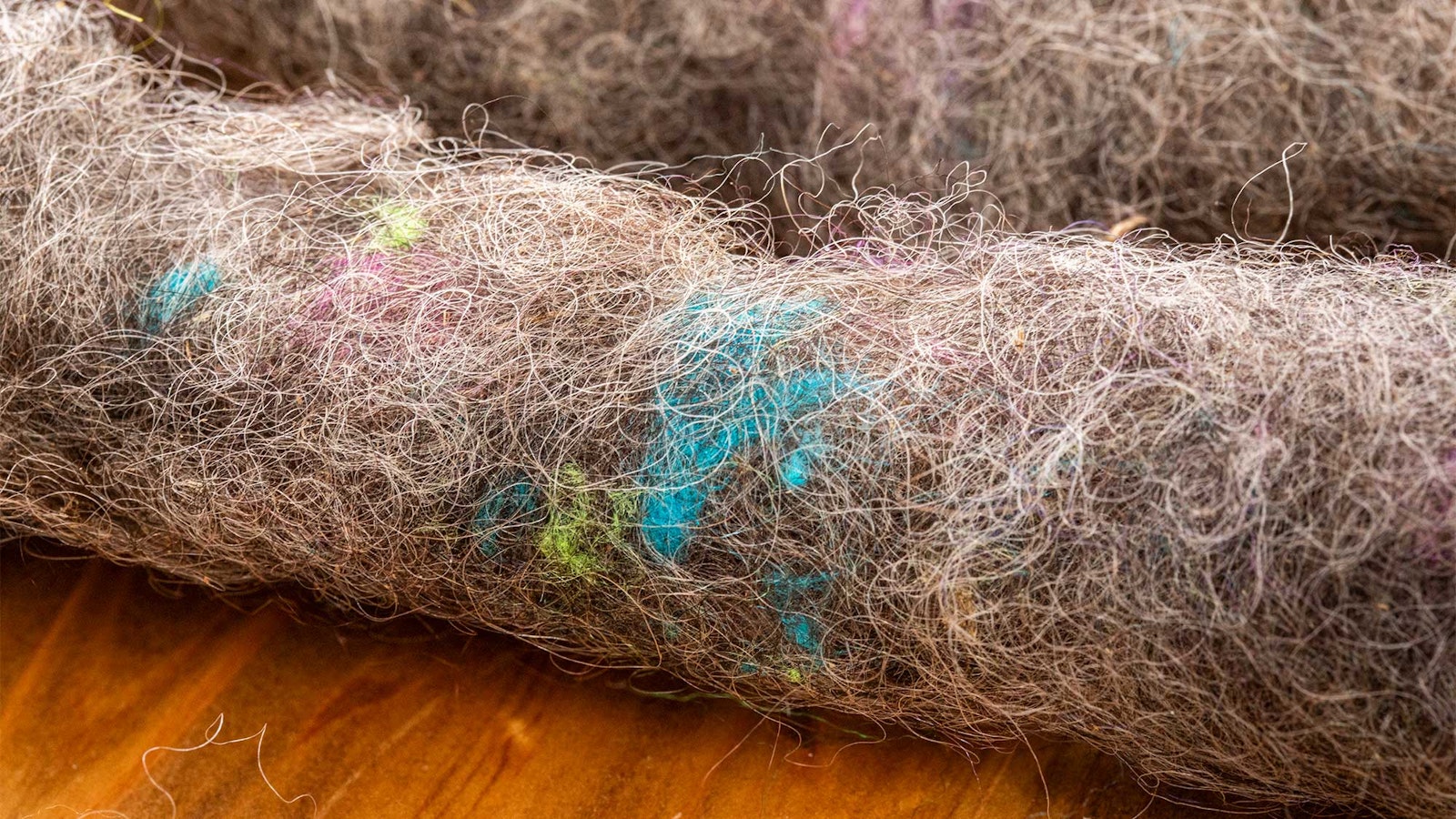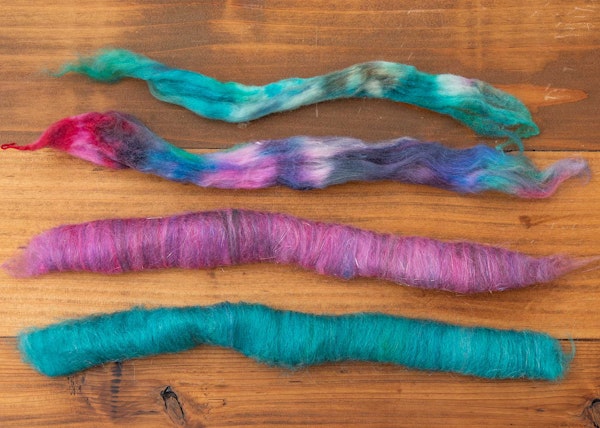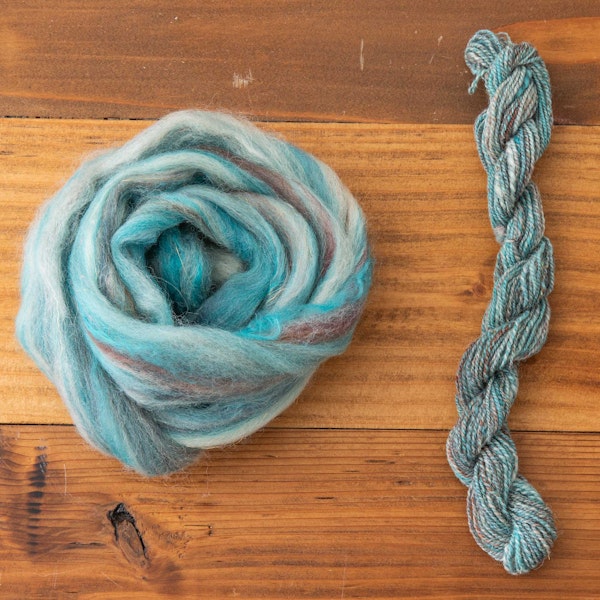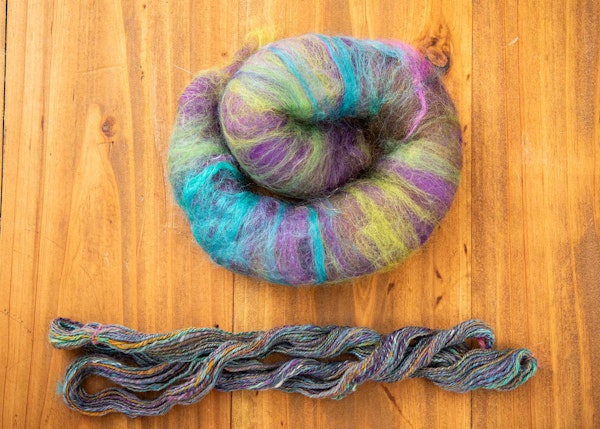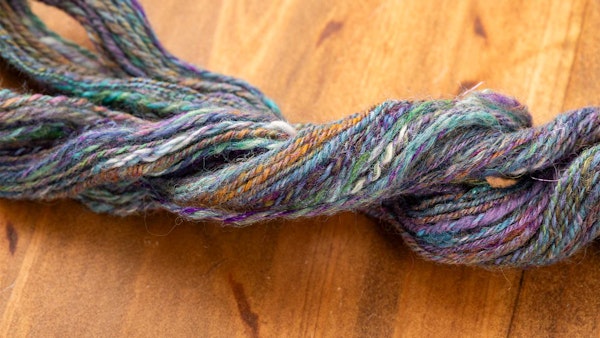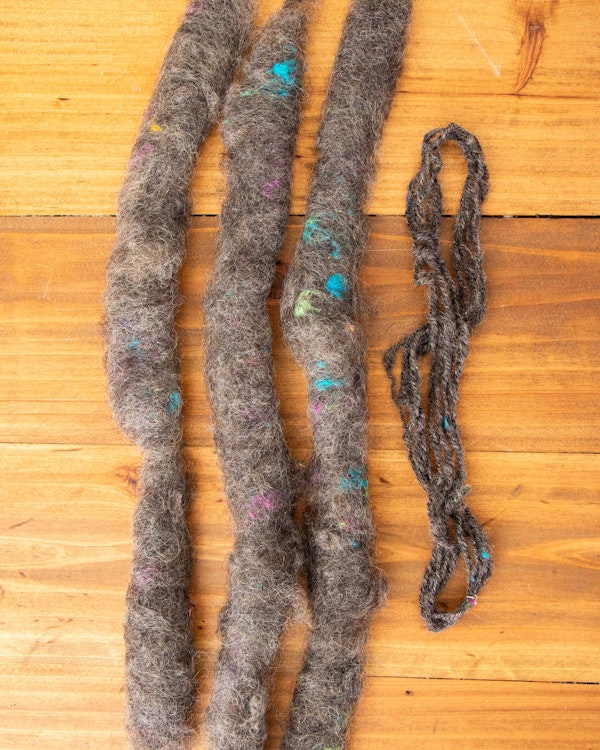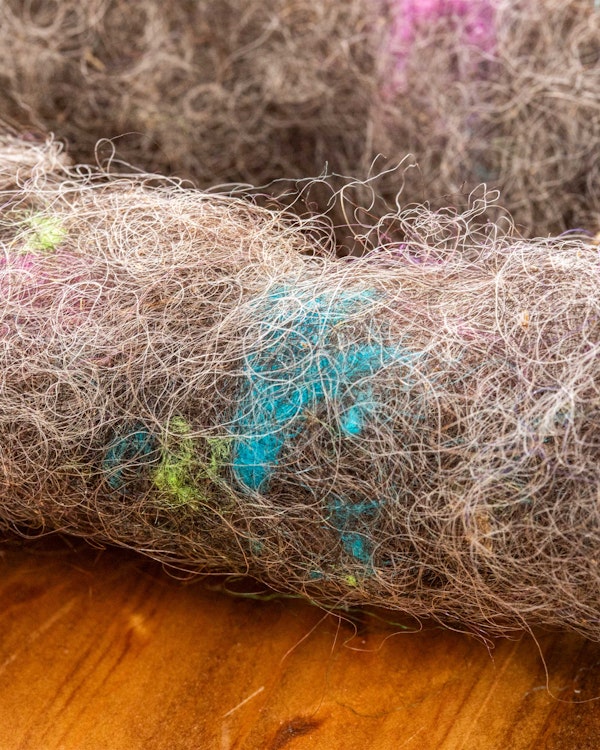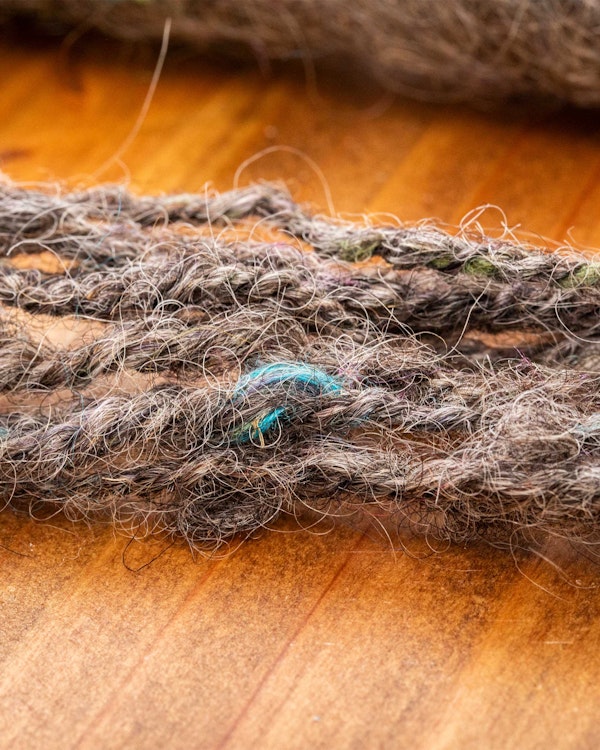Not all habits are bad ones, at least when it comes to fiber preparation and spinning fixations. Mine? I can’t resist adding a smattering of visual and tactile complexity into my handspun yarns in the form of heathers, tweeds, and flecks.
These inclusions of color and textural elements can overlap, though there are differences—notably in historical context. While we often see them used together, any one may be implemented on its own to match your personal style, be it subtle, bold, or anywhere in between.
While I prefer using my blending board or drumcarder to create these effects, all you really need is a pair of hand cards.
Heathers
A heathered yarn is made by blending together fibers of differing colors, resulting in a lovely muted but complex appearance when knitted. I like to layer my colors lightly and arbitrarily on my blending board, then I roll the carded fiber off into roll-ups (rolags or puni-rolags). Don’t over-card. The goal is a nuanced color merging—not a fully mixed, new color. Including shiny fiber(s) of a similar staple length to my wool(s) yields even more visual interest to my end result.
Hand combs or a hackle are also effective for blending up a heathered yarn, so long as the staple lengths of your fibers are comparable. Otherwise, the shorter-length fiber will be combed right out as waste!
Heathered yarns are beautiful on their own, but don’t stop there—heathering makes an excellent base for tweeds and flecks.
Tweeds
Tweed has a distinct historical basis dating back to Scotland in the 18th century, though today these parameters are more relaxed and now most of us consider tweed to be more of a complex nubby visual effect than the cloth created in that region. (The “real” thing is still in production, however!)
Tweed was born to protect those in the hard-working rural farming community from the cold, wet, and windy elements while making sure no scraps of coarser local wool went to waste. These flecks, or nepps, were carded into lanolin-rich wool, spun woolen, then woven, creating the weatherproof, tweedy cloth most of us think of when we think of the term. This cottage industry took off worldwide, and now we all know of the dyed-in-the-wool tweeded (and heathered!) yarns and cloth inspired by the colors of the Scottish landcape.
To create your own tweed yarn, cut wool thrums and/or handspun scraps down into small bits, about 1/8–1/4 inch long. This is an important step in helping to ensure that they adhere to your main wool during the carding process. If you’re using handspun scraps, you can hand-card them open a touch before adding them to your spinning fiber. Carding your fiber and ingredients thoroughly and spinning with a woolen or woolen-esque draw will help your bits of color and texture meld into your singles as eye-catching flecks and not decoration for your floor.
Tweed looks great against most any background, including solids and heathers, but like many great things, too much is just too much. I like to keep my tweed mix-ins to 15% or less of the overall mix or spin one ply plain. Your nepps can be single or multi-colored, though natural flecks of tweed are nice, too. As always, sample before committing to a larger project!
Flecks
Speaking of flecks: If we’re being exacting, all tweed contains bumpy surface disruptions, but not all flecks are technically tweed. Some interruptions in the surface cloth are visual in color and not tactile. Regardless, flecks may be made up of most any material that can be garneted—or shredded—down and carded into your fiber. All add a fun vibe to your spinning projects.
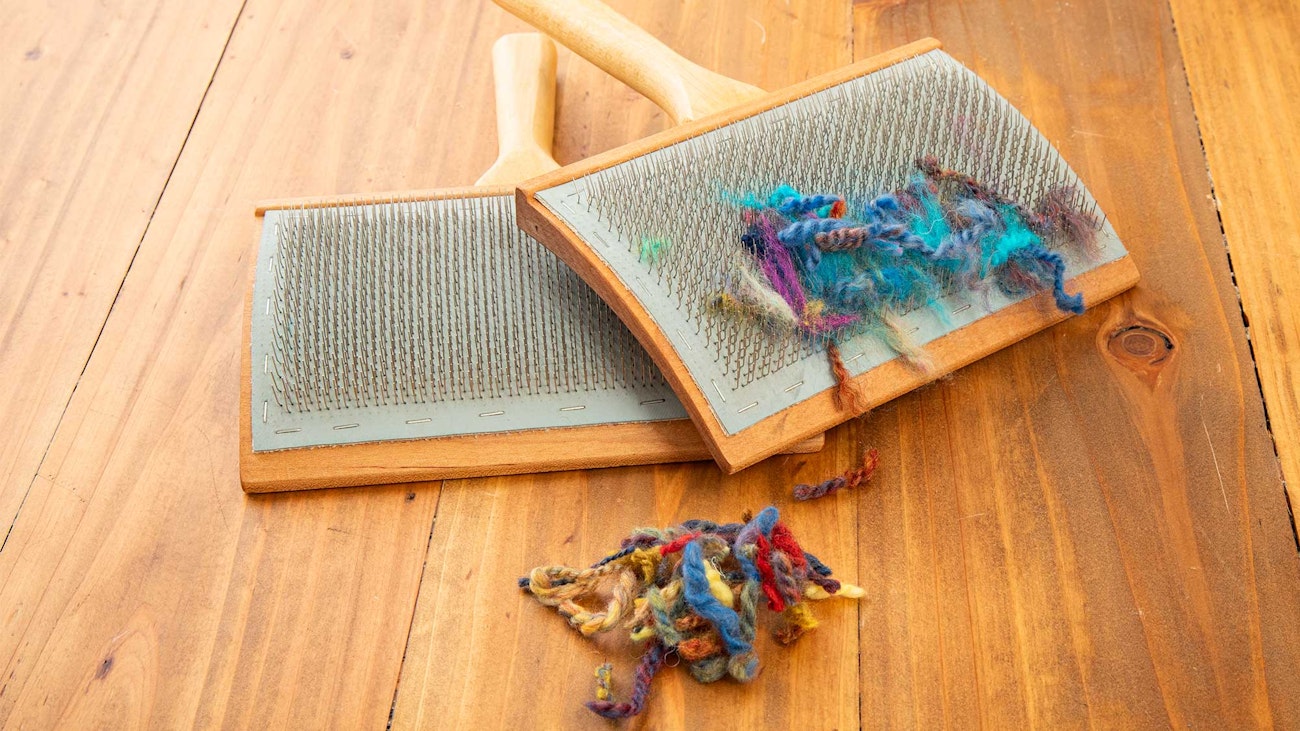 Learn how to create your own mix-ins with Spinning Garneted Yarns.
Learn how to create your own mix-ins with Spinning Garneted Yarns.
So, now that you’re in the know, I hope you’ll give one or more of these carding styles a try. Who knows—maybe you’ll find your own new spinning obsession. After all, there’s a whole world of colorful inspiration out there!
Resources
- Get tweed spinning tips with Kate Larson’s 4 Tweed Yarns to Spin.
- Experiment with your perfect blending ratio for mix-ins with Riley Kleve in Blending Ratios: Experimenting with Nepps, Noils, and More.
- Watch a tutorial on making and Spinning Garneted Yarns.

